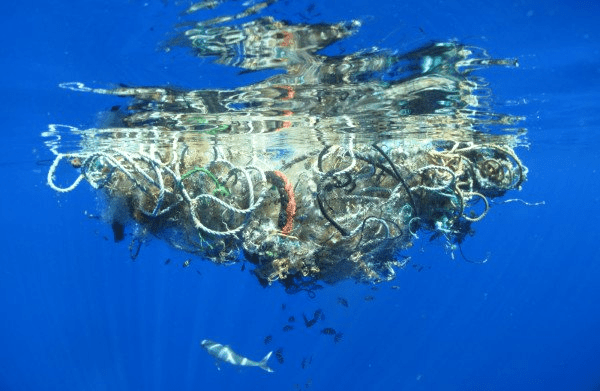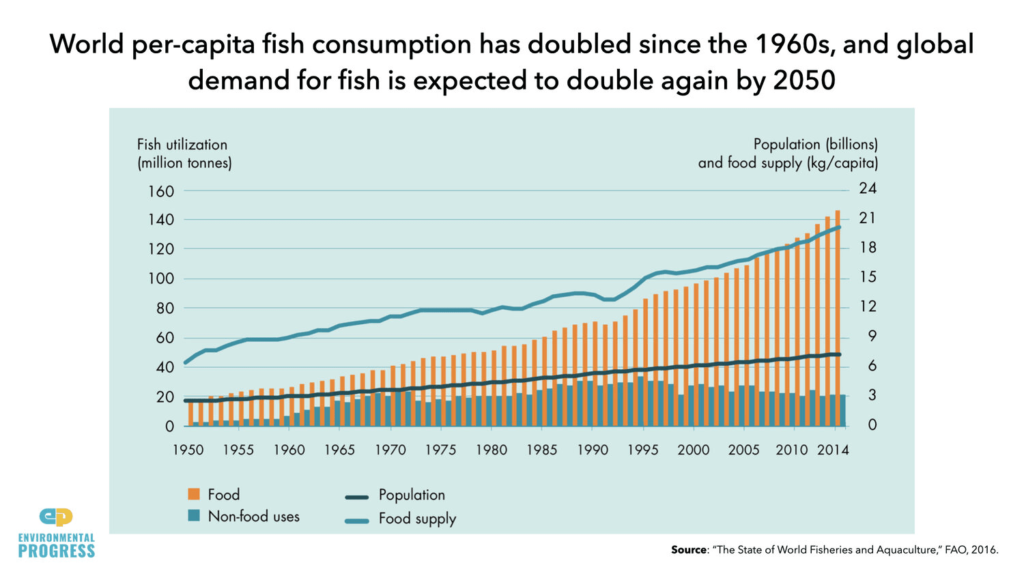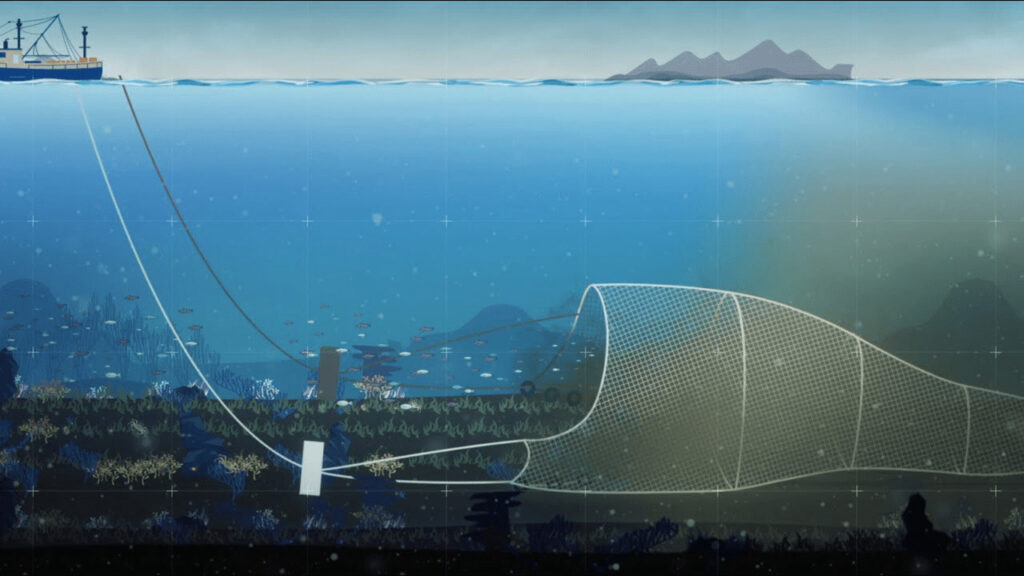“For me the oceans were an indestructible source of inspiration, but not long into starting the project, this romantic vision that I always had of the ocean completely changed.”
– Ali Tabrizi
(Filmmaker: Seaspiracy)
Our oceans make up for a little over than 70% of the globe. Of all the life forms found on planet Earth, an estimated 50-80% are found below the surface. Therefore, it houses a plethora of species, humans can only imagine of discovering. However, over the years, due to commercial activities and large-scale industrialization, the oceans have become greatly threatened. The 90 minute Netflix Original documentary film Seaspiracy by Ali Tabrizi dives deeper to explore the threats that the oceans face.
Plastic Pollution has always been one of the biggest threats to the ocean. A great number of social initiatives have recently stressed on why it is absolutely vital to stop the use of single-use plastic. The documentary shows horrific images of dolphins and whales washing up ashore with plastic bottles, wrappers, etc found in their stomachs. There are numerous news articles that report the death of marine animals due to the intake of plastic.
These marine animals mistake plastic for food. The plastic waste is broken down into microplastics after being continuously exposed to the rays of the suns, oceanic waves and marine life. These microplastics are consumed by the fish, the same fish that are consumed by us. Therefore, not only do plastics pose a threat to the health of marine life but our lives too.
Plastics cover as much as 40% of the oceans. They accumulate and stay afloat on ocean surfaces; the largest of these accumulations being the Great Pacific Garbage Patch. The Great Pacific Garbage Patch is located between Hawaii and California. It is the largest of the five offshore accumulation plastic zones in the world covering a surface area of 1.6 million sq. km! When The Ocean Cleanup conducted extensive research and study on the Great Pacific Garbage Patch, they found 1.8 trillion pieces of plastic, the weight of which is approximately 80,000 tonnes.

Banning plastic straws just solves a tiny fraction of the problem; it is imperative for industries to take part in a more fundamental shift away from single-use plastics as a whole.
However, while significant stress has been laid upon banning the use of plastics and reducing plastic pollution, according to Seaspiracy, there is a bigger threat to the oceans: Overfishing. After conducting a series of interviews, research and on-sight visitations, Ali Tabrizi realizes the threat overfishing has not only to marine life but also to the entire ecological balance at large.
According to marine ecologists, overfishing poses the greatest threat to ocean ecosystems. In the past, fishing was sustainable because fishermen could not access locations farther off from the coast and had no access to advanced technology to increase their catch. However, in recent years, fisheries aren’t a small family business anymore; they have grown to become large fish industries catching large volumes of fish every single minute. The advanced technology available today has made it possible for companies to use GPS to locate large schools of fish.
Due to increase in global demand for different species of fish like salmon, tuna, etc, and the availability of subsidies, fishing is taking place at a scale larger than ever before. According to reports by the United Nations Food and Agricultural Organization (FAO), over 70% of the world’s fisheries belong to either of these categories: fully exploited, over exploited or significantly depleted. 124 million metric tons of fish are caught globally every year, which according to a paper published by Dartmouth University, is equivalent in weight to 378 Empire State Buildings.

One of the effects of large-scale fishing is bycatch. It is extremely difficult to be selective while targeting certain fish. Almost always some other species of fish and those who cannot escape the thresholds of the net are captured, too. In Seaspiracy, Ali Tabrizi stresses on the horrors of bycatch. The marine animals that are not wanted are tossed back mercilessly into the waters, most often dead. We see a series of recordings of beautiful and healthy sharks being tossed into the ocean as if they had no life and felt no pain; it seemed as if they had been given life just to be exploited by humans.
Ali mentions that approximately 50 million sharks are killed annually as bycatch. AS BYCATCH! The IUCN list enlists more than 135 sharks in the “endangered species” category. A decline in the number of sharks can have a devastating impact on the ecosystem underwater because the stability of ecological species depends largely on the interactions between the predators and their prey. Thus, if species are wiped out, it could disrupt the food chain below the surface. As mentioned in Seaspiracy, the ecological chain below the surface is vastly different and more complicated than what is observed above the surface.
Some of the modern techniques used to fish are also catastrophic to the marine ecosystem. Trawling is also one of the issues stressed upon in the Netflix documentary.

Trawl nets are so huge that they can swallow whole cathedrals or up to 113 Jumbo Jets. Trawl nets also impact underwater vegetation. Once these nets become heavy, they drop to the bottom of the ocean and are then dragged to the coast. This destroys the ocean bed and leaves the entire area barren.
While there are regulations in place, what Seaspiracy shows us is that those regulations only exist on paper. Most organizations send in an ‘observer’ on board to maintain the law, but there have been many instances where the observers have gone mysteriously missing while at sea. Some observers make it back alive because they have no choice but to accept bribes from the fishermen on board. Most governments at least try to adhere to the regulations set, but few countries have refused to even recognize them.
While Ali Tabrizi was conducting research that ultimately led to the making of the documentary, Japan had started the dolphin hunt. The controversial hunt takes place in a small coastal town in Japan, Taiji. The documentary focused on how the government was supporting the practice because they were catching bluefin tuna, one of the most expensive fishes in the world.
Although fishing is economically important, statistics prove that we will bear greater losses if we wipe out our oceans. If fishing continues at the scale it is occurring then by 2048 all the world’s fisheries will get wiped out. Is there a solution to this? Enforcing international laws have not worked, creating marine parks have not worked, sustainable fishing does not seem to live up to its title: then is there a way to revive the oceans?
Yes. According to Seaspiracy, reducing or completely stopping the consumption of fish can have positive ripple effects in this aspect. A video montage by BBC shows an interview with a little girl in Japan right after she sees hundreds of dolphins get slaughtered. She is asked whether she would eat dolphin meat after seeing the hunt or not to which she replies with a stern no.
Given that fishing is a source of food for millions of people across the globe, it will not be an easy solution to implement. While there are plant-based alternatives for meat that do not take away either from the flavour or the taste, habitual changes are very difficult to bring about among the masses.
(P.S Seaspiracy makes me wonder if people consciously choose to highlight the devastating impact that plastic has over what overfishing has because it’s easier to stop the consumption of plastic than to stop the consumption of fish.)
Nonetheless, it is time that we give up our comfort to take care of the planet that is a home to flora and fauna beyond imagination; it is time for us to take care of all that lies below the surface because they are vital to our own existence. We have to understand that unless we protect marine life, we will be disrupting the ecological balance at large.
Seaspiracy opens our eyes to the truth, maybe an oversimplified version, but the truth nonetheless. The documentary nears the end as we witness the grind. I have never shut my eyes during a jump-scare scene in horror movies but the grind was something I could not bear to watch. It was painful. I felt responsible and guilty. I felt considerable pain and I cannot begin to imagine what these animals with heightened sensitivity must feel. I cannot bear to even think let alone play a part in it; play a part in the merciless killing of marine animals.
I hereby sign the petition. I do not want to be a part of this.
Written by- Ada Khan
Edited by- Sohini Roy
